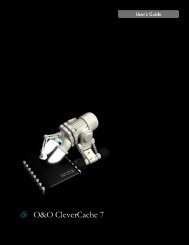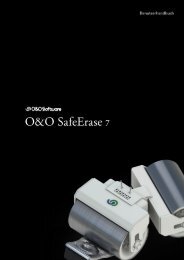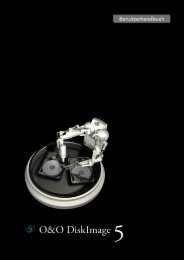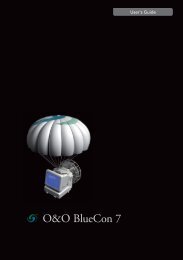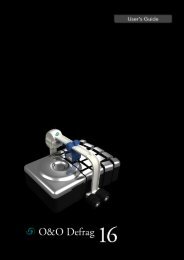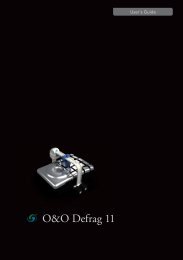O&O DiskImage 7 User's Guide - O&O Software
O&O DiskImage 7 User's Guide - O&O Software
O&O DiskImage 7 User's Guide - O&O Software
Create successful ePaper yourself
Turn your PDF publications into a flip-book with our unique Google optimized e-Paper software.
Frequently asked questions<br />
Frequently asked questions<br />
When and how often should I make images?<br />
We recommend imaging on a regular basis (at least once a month). The more regularly it’s performed, the more up-todate<br />
the data contained within those images will be. As a guiding rule, you should always image an intact system.<br />
Which drives should I image?<br />
You should generally image all drives, meaning the system drive (Windows), primarily Drive C, and all remaining data<br />
drives where private and business data, e.g. customer data, photo collections or music are stored.<br />
Where should I store my image?<br />
Don’t save the image on the same hard disk where the imaged drive is located. It should be ideally stored on an external<br />
hard disk or a CD/DVD.<br />
I just bought myself a new computer. If I take a complete image of my old computer, can I restore it to my new<br />
one?<br />
Restoring data drives is not a problem even with differing hardware. However, system partitions can only be restored<br />
on differing hardware using the Start CD and the integrated M.I.R. You can read more about this in the chapter Settings<br />
for restoration on different hardware.<br />
Do I have unlimited use of all functions with the trial version?<br />
The trial version is not restricted – all program functions are fully operational. You should note, however, that restoring a<br />
system partition is only possible with the bootable O&O <strong>DiskImage</strong> CD, included when you purchase the product.<br />
When do I need the bootable CD from O&O <strong>DiskImage</strong>?<br />
You will need the Start CD, if you want to restore your entire computer or a system partition. The Start CD can also be<br />
used, if the operating system doesn't start up anymore.<br />
How do I save an image to CD/DVD?<br />
1. You must create an image file(s) and save it to your hard disk before you can write it to CD/DVD.<br />
2. When creating the image, under Drive imaging/Imaging options/File size, you should restrict the maximum<br />
image file size to the size of the intended removable medium where it will be saved.<br />
3. Should the image exceed the selected maximum file size, it will be split into several image files.<br />
4. You can then burn the image files to CD/DVD.<br />
5. Select Tools on the start page, then on Burn image file(s) and follow the instructions.<br />
What do I do when my image is too big for a CD/DVD?<br />
1. If the Image you already saved to your hard disk is too big for the blank CD/DVD, you can, of course, still split<br />
the image file.<br />
2. Under Tools, open up Convert image file.<br />
3. Select the Image you wish to change by using Add.<br />
4. Merge incremental Images<br />
5. During conversion, one copy of the Image will be made while the original remains unchanged.<br />
I have split the image and saved it on various disks (CD/DVD).<br />
I want to:<br />
• restore this image<br />
• display drives from the image<br />
• use the image as a base image for incremental imaging purposes<br />
O&O <strong>DiskImage</strong>-86



